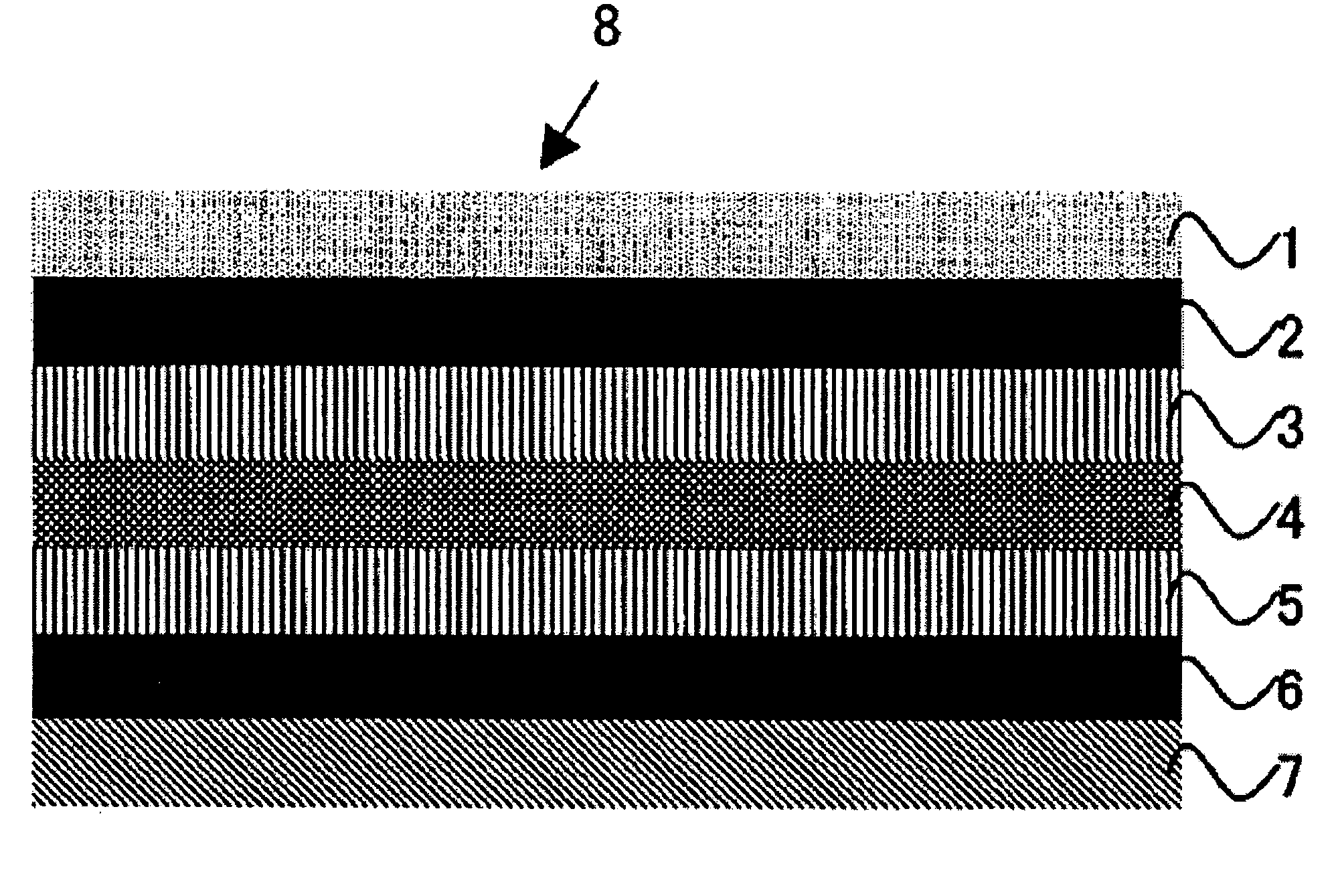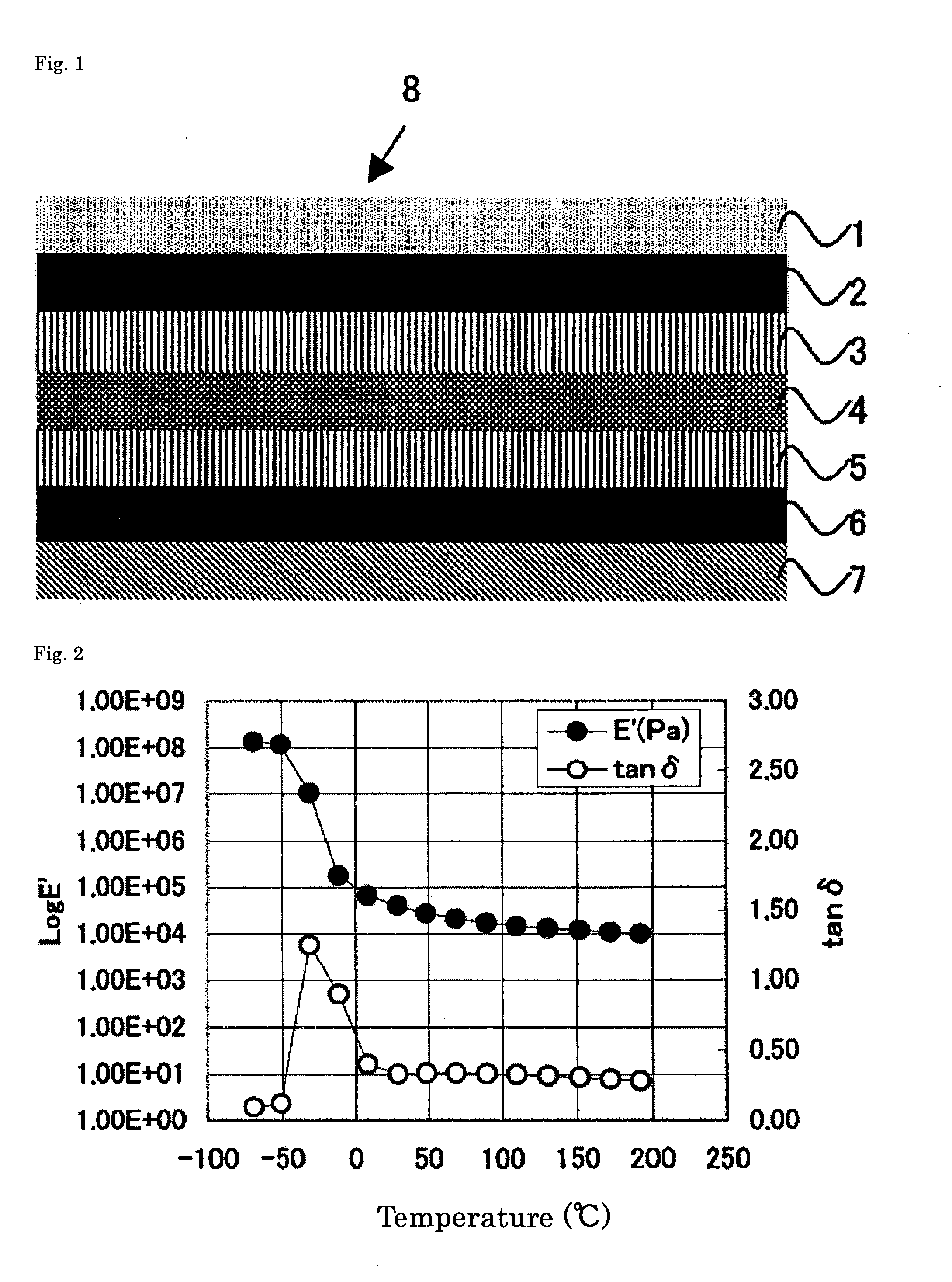Optical laminate
a technology of optical laminate and glass base material, applied in the field of optical laminate, can solve the problems of peeling between the adhesive layer and the glass base material, light leakage, and tn liquid crystal cell light leakage, and achieve the effect of reducing light leakage and excellent durability
- Summary
- Abstract
- Description
- Claims
- Application Information
AI Technical Summary
Benefits of technology
Problems solved by technology
Method used
Image
Examples
example 2
Polymerization Example 2
[0144] A reaction vessel equipped with a cooling tube, nitrogen introduction tube, thermometer and stirrer was charged 100 parts of ethyl acetate, 98.9 parts of butyl acrylate as a monomer (a) and 1.1 parts of acrylic acid as a polar functional group-containing monomer, air in the apparatus was purged with a nitrogen gas, and the inner temperature was raised to 70° C. while maintaining no oxygen-containing atmosphere, then, a solution prepared by dissolving 0.03 parts of azobisisobutyronitrile (hereinafter, referred to as AIBN) in 10 parts of ethyl acetate was added in its entirety. Thereafter, the inner temperature was kept at 69 to 71° C. for 12 hours, to complete the reaction. The weight-average molecular weight based on polystyrene calibration standard of GPC was 1,200,000, and Mw / Mn was 3.9.
example 1
[0145] Acrylic resins (1) and (2) were mixed in a weight ratio shown in Table 1, to obtain an ethyl acetate solution of an acrylic resin composition. 100 parts of solid components in the resulting solution were mixed with 0.07 parts (solid content) of a cross-linking agent, polyisocyanate-based compound (trade name: Takenate D-110 N, manufactured by Mitsui Takeda Chemical) and 0.1 part (solid content) of a silane compound (trade name: Y11597, manufactured by Nippon Unicar), to obtain an adhesive (1) of the present invention. In the same manner, an adhesive (2) was prepared. The mixing ratio of the acrylic resins (1) and (2), cross-linking agent, silane-based compound and loss tangent are shown in Table 1.
TABLE 1cross-linking agentacrylic resin (1)acrylic resin (2)(isocyanatesilane-storagenon-non-compound)based compoundmodulusmaximumpolymeri-volatilepolymeri-volatileuseusepeakat peakvaluezationcontentzationcontentamountamounttempera-tempera-lossexample(parts)example(parts)kind(part...
PUM
| Property | Measurement | Unit |
|---|---|---|
| frequency | aaaaa | aaaaa |
| temperature | aaaaa | aaaaa |
| viscosity | aaaaa | aaaaa |
Abstract
Description
Claims
Application Information
 Login to View More
Login to View More - R&D
- Intellectual Property
- Life Sciences
- Materials
- Tech Scout
- Unparalleled Data Quality
- Higher Quality Content
- 60% Fewer Hallucinations
Browse by: Latest US Patents, China's latest patents, Technical Efficacy Thesaurus, Application Domain, Technology Topic, Popular Technical Reports.
© 2025 PatSnap. All rights reserved.Legal|Privacy policy|Modern Slavery Act Transparency Statement|Sitemap|About US| Contact US: help@patsnap.com



